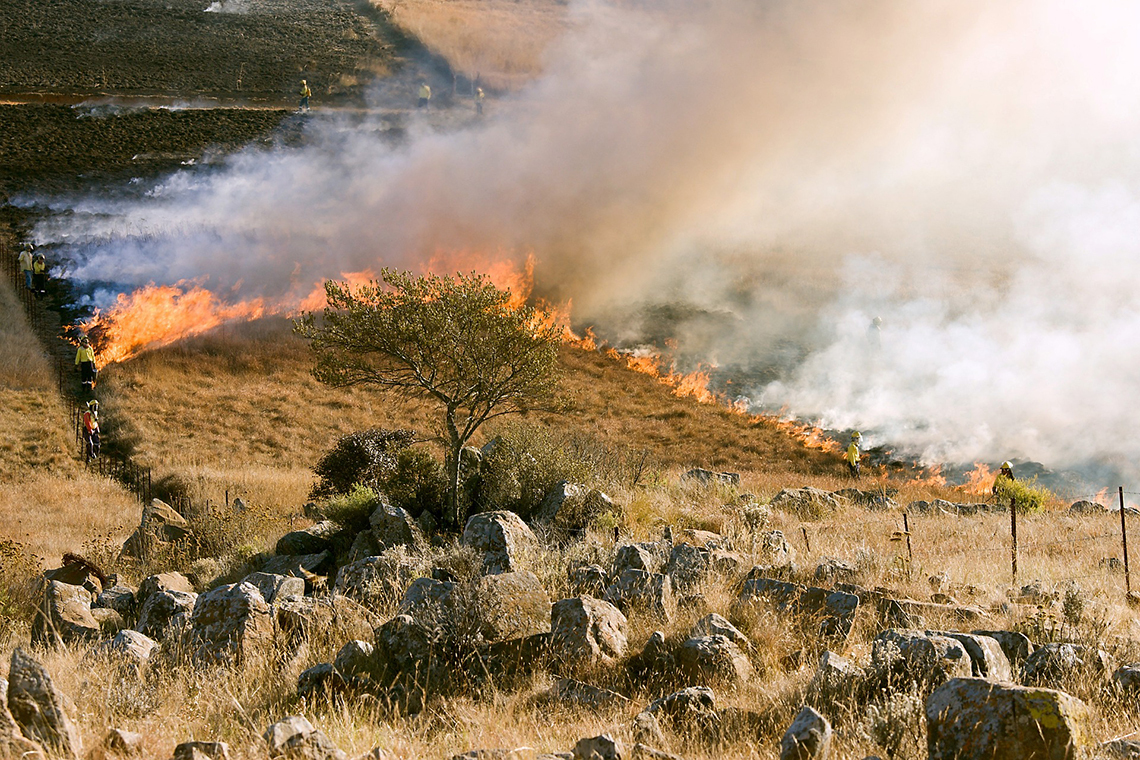Story
Watch out for wildfire: Rural fire risk management
Aotearoa New Zealand has seen an increase in the frequency of wildfires over the last 3-4 years due to changes in weather, changing landscape use, and the resulting increase in the amount of dry weedy fuel and more frequent clean-up burns. There are now around 4,500 wildfires every year, with approximately three percent developing into large blazes that cause major impacts and loss – and more of them are happening in the shoulder seasons.
For farmers and rural landowners, it’s essential to protect yourself and your property by understanding fire risk management and having a risk reduction plan.
Risk reduction planning requires you to think about how you use your property from a fire-risk perspective.
Rural firefighters use the fire behaviour triangle to understand and manage fire risk. Fires need fuel, heat, and oxygen to burn, and their behaviour and rate of spread is influence by topography, fuel, and weather. Consider the topography on your farm. Fires can spread quickly up sunny, steep slopes – which characterise much of Northland – because smoke and sparks easily spread uphill ahead of the flames to heat and dry potential fuel sources and ignite new hotspots. Dry weather, wind, and low humidity are also risk factors for fire, as is the nature of the vegetation on your property.
Bearing in mind your farm’s vulnerabilities to fire and how fire is likely to behave on your land, consider how you use your land now and what your land use plans are for the future. Could you adjust your plans to better protect yourself and your property from fire?
For example, what types of vegetation do you have on your land? Although all plants will burn, some are more fire resistant than others. Fire resistant plants tend to have watery sap, moist and supple leaves that do not ignite easily, and do not accumulate much dead wood within the plant – natives such as kotukutuku, five-finger, karamu, hangehange, karaka and kawakawa are good choices, as are exotics such as poplars, willows, maple and ash. In contrast, gorse, manuka, kanuka, and eucalyptus burn easily. Choose low flammability vegetation for shelter belts and amenity planting around buildings.
Consider putting in ‘green’ fire breaks. These should be perpendicular to the prevailing wind and include multiple layers comprising trees, shrubs, herbaceous plants and fungi that create a cool, wet, shady environment.
It is also important to plan for how firefighters could access your land and water supplies to protect you in the event of a wildfire emergency. If you have a RAPID number, make sure it is visible at your property entrance. Ensure accessways are well maintained and are at least four metres wide with four metres of overhead clearance. There should be room for firefighting pumps within seven metres of your water supply. Talk to your neighbours so you have a plan for sharing access and water supply in an emergency, and make sure your property is easy for emergency services to find.
Other things you can do to protect your property include:
- know what fire season it is (Open, Restricted, or Prohibited) and what that means
- clear dry or dead vegetation at least 10 metres away from buildings (this includes stacks of firewood and keeping lawns mowed)
- store flammable liquids, such as petrol and agricultural chemicals, in clearly labelled containers in a single-purpose location away from other buildings
- fit fire extinguishers on machinery and in buildings, and regularly check they’re working
- keep machinery clean and free of mechanical defects that could generate sparks
- keep trees and branches at least three metres clear of power lines
- do welding and angle-grinding only in clear areas, and wet down your surroundings before you start
- if you’re doing an open-air burn, choose a calm day, clear at least three metres around the area, and supervise the fire until it’s completely out.
Find out more

Firefighters tackle a wildfire on a rural property.
